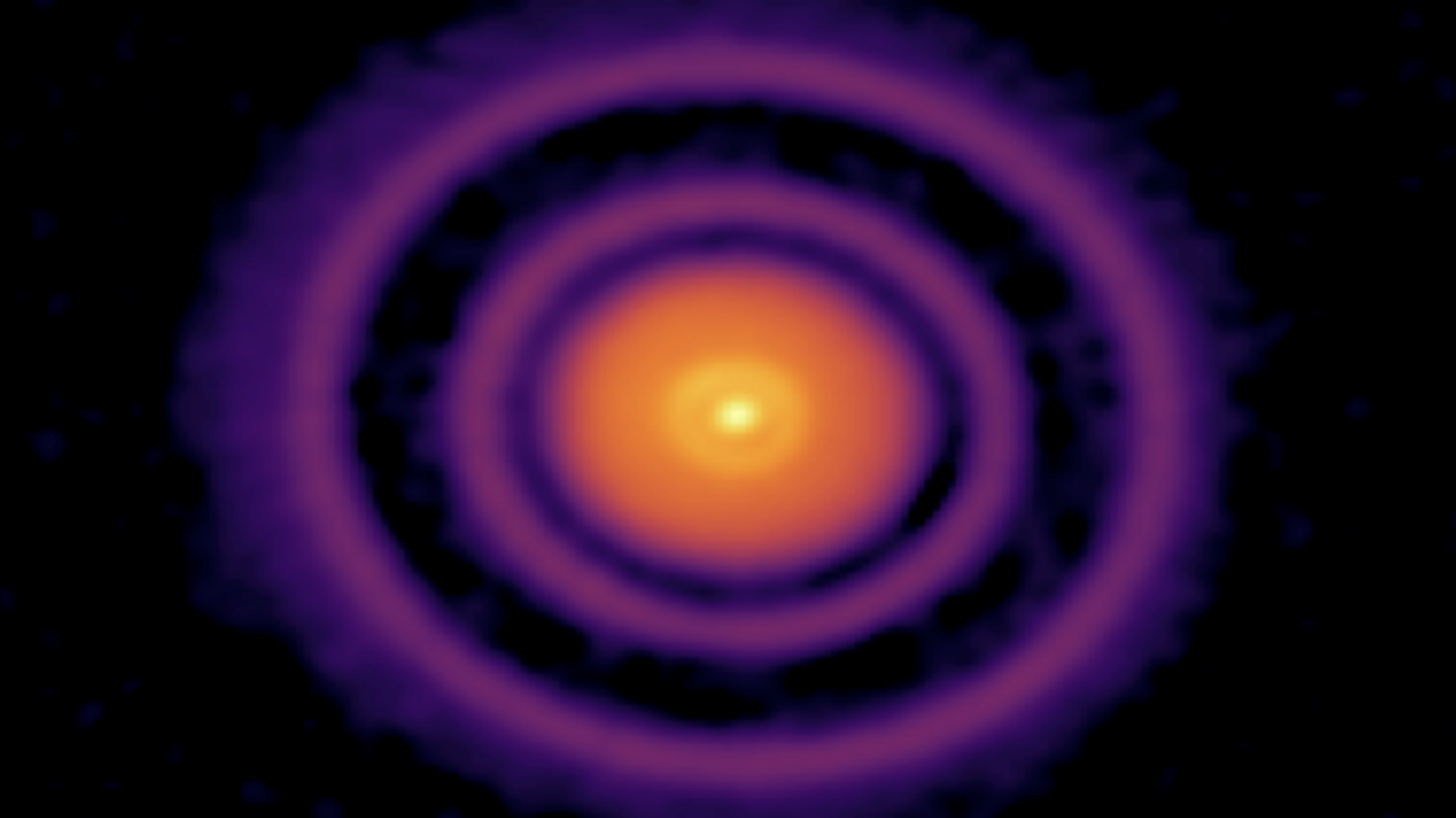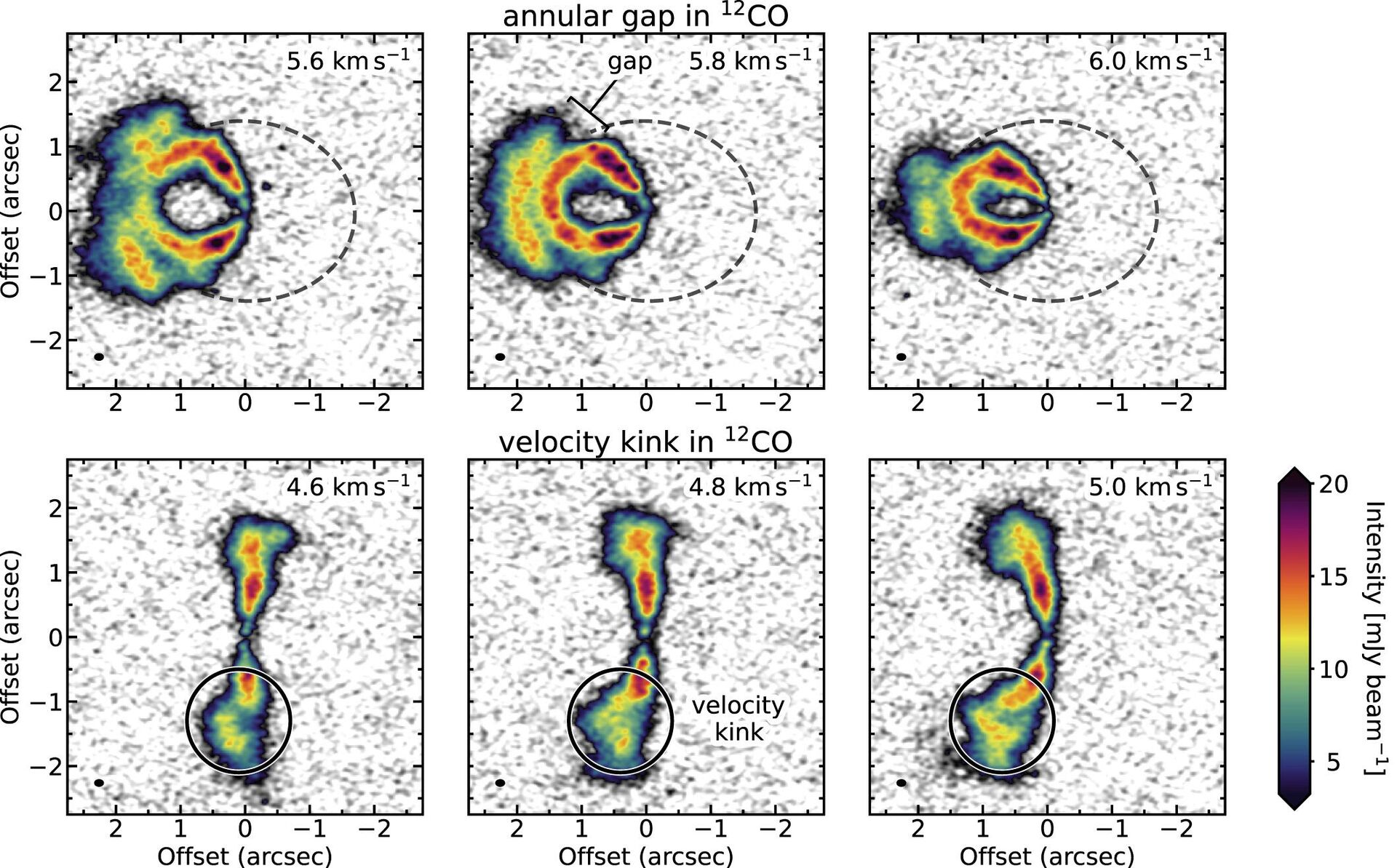https://sputnikglobe.com/20220810/planetary-nursery-researchers-claim-to-have-discovered-possibly-youngest-exoplanet-to-date-1099462862.html
Planetary Nursery: Researchers Claim to Have Discovered Possibly Youngest Exoplanet to Date
Planetary Nursery: Researchers Claim to Have Discovered Possibly Youngest Exoplanet to Date
Sputnik International
Astronomers have discovered more than 5,000 exoplanets in the past 30 years, a diverse collection of planets located far beyond our solar system. And the most... 10.08.2022, Sputnik International
2022-08-10T22:28+0000
2022-08-10T22:28+0000
2023-04-12T16:58+0000
science & tech
galaxy
planet
new planet
space
https://cdn1.img.sputnikglobe.com/img/07e6/08/0a/1099463539_0:177:788:620_1920x0_80_0_0_aaa6a7e034db2f0a638abc84a48adc9c.png
A newly published study in the journal The Astrophysical Journal Letters claims to have found one of the youngest planets ever discovered, and possibly the youngest.According to a release issued by the National Radio Astronomy Observatory, this extremely young - in terms of the universe - orb, located 395 light-years from Earth in the constellation Ophiuchus, is still putting its gas and dust together.A circumplanetary disk is a name for a phenomenon that contains a collection of gas, dust, and debris around newborn planets. These disks produce moons and other rocky satellites and regulate the development of young, massive planets. The origin of our own solar system, as well as that of Jupiter's Galilean moons, which researchers believe formed in a circumplanetary disk of Jupiter some 4.5 billion years ago, may be better understood by looking at these disks in their early phases, the scientists argued.According to the study, further telescopic observations will be necessary to confirm the alleged planet's existence because it is hidden by the very substance that is creating it. Scientists can utilize it to learn more about how planets are created, if it's not merely rocky debris that looks like a planet.Long-held theories of planet formation have been challenged or proven false by the flood of recently discovered exoplanets. However, the fact that this young planet is securely embedded in a disk of primordial matter around its star supports the theory that most planets spend a significant amount of time in this type of nursery as they develop.The researchers targeted Atacama Large Millimeter/submillimeter Array (ALMA) at AS 209, a star that is just a little bit heavier than the sun, for the study. It is only 1.5 million years old and has just lately begun to burn hydrogen. It was discovered that AS 209's circumstellar disk had many gaps. Additionally, ALMA discovered the radio-wave signature of a planet-forming tempest in one of these gaps, which was likely gas encasing a Jupiter-like globe that was still undergoing construction.According to the research, it will take some time to determine the planet's exact age, although it is most likely quite young, like its star. However, its youth is not the only factor attracting astronomers' attention, as it is also strangely far from its star. For instance, the distance between the Sun and Neptune, the solar system's furthest planet, is approximately 4.5 billion km (2.8 billion miles). However, nearly 30 billion km (19 billion miles) separate this exoplanet from its own star.Uncertainty surrounds the size of the debris disk that created Earth and the other planets. And there is a scientific opinion that Neptune's position as the outermost planet may be explained by the fact that the disc was only marginally larger than Neptune's orbit. However, the researchers suggest it is possible that our planet-forming material hub was more like AS 209's. The James Webb Space Telescope will measure the planet's mass and analyze its atmosphere in the near future. According to research author Jaehan Bae, an astronomer at the University of Florida, these observations will bring us all one step closer to the ultimate question: "Where did we originate from?" by providing a thorough description of one of the youngest worlds known to science, per the NYT.Exoplanets may have circumplanetary disks around them, as scientists have long hypothesized, but they have been unable to demonstrate this until lately. While analyzing the young exoplanet PDS 70c in 2019, ALMA researchers made the first-ever observation of a circumplanetary, moon-forming disk. The discovery was later verified in 2021.
https://sputnikglobe.com/20220803/photo-dazzling-cartwheel-galaxy-captured-by-nasas-james-webb-telescope-leaves-netizens-in-awe-1098064482.html
Sputnik International
feedback@sputniknews.com
+74956456601
MIA „Rossiya Segodnya“
2022
News
en_EN
Sputnik International
feedback@sputniknews.com
+74956456601
MIA „Rossiya Segodnya“
Sputnik International
feedback@sputniknews.com
+74956456601
MIA „Rossiya Segodnya“
science & tech, galaxy, planet, new planet, space
science & tech, galaxy, planet, new planet, space
Planetary Nursery: Researchers Claim to Have Discovered Possibly Youngest Exoplanet to Date
22:28 GMT 10.08.2022 (Updated: 16:58 GMT 12.04.2023) Kirill Kurevlev
Managing Editor
Astronomers have discovered more than 5,000 exoplanets in the past 30 years, a diverse collection of planets located far beyond our solar system. And the most recent discovery could be as young as a child.
A newly published study in the journal
The Astrophysical Journal Letters claims to have found one of the youngest planets ever discovered, and possibly the youngest.
According to a
release issued by the National Radio Astronomy Observatory, this extremely young - in terms of the universe - orb, located 395 light-years from Earth in the constellation Ophiuchus, is still putting its gas and dust together.
A circumplanetary disk is a name for a phenomenon that contains a collection of gas, dust, and debris around newborn planets. These disks produce moons and other rocky satellites and regulate the development of young, massive planets.
The origin of our own solar system, as well as that of Jupiter's Galilean moons, which researchers believe formed in a circumplanetary disk of Jupiter some 4.5 billion years ago, may be better understood by looking at these disks in their early phases, the scientists argued.
"It is like looking at our own past,” Myriam Benisty, an astronomer at the Institute of Planetology and Astrophysics of Grenoble in France and a co-author of the study, told the New York Times.
According to the study, further telescopic observations will be necessary to confirm the alleged planet's existence because it is hidden by the very substance that is creating it. Scientists can utilize it to learn more about how planets are created, if it's not merely rocky debris that looks like a planet.
Long-held theories of planet formation have been challenged or proven false by the flood of recently discovered exoplanets. However, the fact that this young planet is securely embedded in a disk of primordial matter around its star supports the theory that most planets spend a significant amount of time in this type of nursery as they develop.
The researchers targeted Atacama Large Millimeter/submillimeter Array (ALMA) at AS 209, a star that is just a little bit heavier than the sun, for the study. It is only 1.5 million years old and has just lately begun to burn hydrogen. It was discovered that AS 209's circumstellar disk had many gaps.
Additionally, ALMA discovered the radio-wave signature of a planet-forming tempest in one of these gaps, which was likely gas encasing a Jupiter-like globe that was still undergoing construction.
According to the research, it will take some time to determine the planet's exact age, although it is most likely quite young, like its star. However, its youth is not the only factor attracting astronomers' attention, as it is also strangely far from its star.
For instance, the distance between the Sun and Neptune, the solar system's furthest planet, is approximately 4.5 billion km (2.8 billion miles). However, nearly 30 billion km (19 billion miles) separate this exoplanet from its own star.
Uncertainty surrounds the size of the debris disk that created Earth and the other planets. And there is a scientific opinion that Neptune's position as the
outermost planet may be explained by the fact that the disc was only marginally larger than Neptune's orbit. However, the researchers suggest it is possible that our planet-forming material hub was more like AS 209's.
The James Webb Space Telescope will measure the planet's mass and analyze its atmosphere in the near future.
According to research author Jaehan Bae, an astronomer at the University of Florida, these observations will bring us all one step closer to the ultimate question: "Where did we originate from?" by providing a thorough description of one of the youngest worlds known to science, per the NYT.
Exoplanets may have circumplanetary disks around them, as scientists have long hypothesized, but they have been unable to demonstrate this until lately. While analyzing the young
exoplanet PDS 70c in 2019, ALMA researchers made the first-ever observation of a circumplanetary, moon-forming disk. The discovery was later
verified in 2021.



